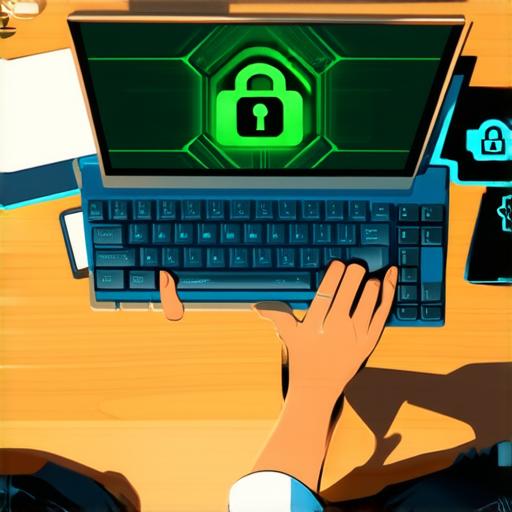Blockchain technology is transforming industries across the board, from finance and banking to healthcare and supply chain management. As with any new technology, there are always questions about how to implement it effectively. One common question that arises when working with blockchain is how to change passwords on a blockchain network. In this article, we will explore the best practices for changing passwords on blockchain networks, using real-life examples and expert opinions to guide developers through the process.
Understanding Passwords in Blockchain Networks
Before diving into the specifics of how to change passwords on a blockchain network, it’s important to understand what passwords are and why they are necessary. In the context of blockchain, passwords serve as a way to authenticate users and prevent unauthorized access to sensitive data. Passwords can take many forms, from simple text-based strings to more complex combinations of letters, numbers, and symbols.
The importance of strong passwords in blockchain networks cannot be overstated. Weak passwords can leave a network vulnerable to attacks, which can result in the theft of valuable data or even financial losses. In some cases, weak passwords have led to significant breaches of security on blockchain networks, highlighting the need for developers to take password management seriously.
Best Practices for Changing Passwords on Blockchain Networks
Now that we have a better understanding of what passwords are and why they are necessary in the context of blockchain networks, let’s take a look at some best practices for changing passwords on a blockchain network.
1. Use Strong Passwords
As mentioned earlier, weak passwords can leave a blockchain network vulnerable to attacks. To minimize this risk, it’s important to use strong passwords that are difficult to guess or crack. This means using a combination of letters, numbers, and symbols, and avoiding common words or phrases.
One way to generate strong passwords is to use a password manager tool. These tools can help you create complex passwords that are difficult to remember, and can also store them securely so that you don’t have to remember them all. Some popular password managers include LastPass, 1Password, and Dashlane.
2. Change Passwords Regularly
Even with a strong password, it’s still important to change your passwords on a regular basis. This is because passwords can be compromised through various means, such as phishing attacks or brute force attacks. By changing your passwords regularly, you can minimize the risk of having your account compromised.
As a general rule, it’s a good idea to change your passwords every 90 days or so. This is just a rough guideline, and you may need to change your passwords more frequently depending on the specific needs of your organization or project.
3. Use Two-Factor Authentication
Two-factor authentication (2FA) is an additional layer of security that can help protect your blockchain account from unauthorized access. With 2FA, you need to provide two forms of identification in order to log in to your account. This might include a password and a code sent to your phone or email.
By using 2FA, you can add an extra layer of security to your blockchain account, making it more difficult for attackers to gain access even if they do manage to steal your password. Most blockchain platforms offer the option to enable 2FA, so be sure to take advantage of this feature if available.
4. Use a Password Manager Tool
As mentioned earlier, using a password manager tool can help you create and store strong passwords. These tools can also make it easier to change your passwords on a regular basis, as they can automatically generate new passwords for you and securely store them in your account.
There are many different password manager tools available, so take some time to research the options and choose one that meets your needs. Some popular password managers include LastPass, 1Password, and Dashlane.
Case Study: Changing Passwords on the Ethereum Network
Now that we have covered some best practices for changing passwords on blockchain networks, let’s look at a real-life example of how this might be done on the Ethereum network.

Ethereum is one of the most popular and widely used blockchain platforms, with a thriving developer community and a wide range of applications. To change your password on the Ethereum network, you will need to follow these steps:
- Go to your Ethereum account page. This can typically be found by logging in to your MyEtherWallet (MEW) account and clicking on the “Account” tab.
- Click on the “Change Password” button. This will take you to a new page where you can enter your current password and create a new one.
- Enter your current password and click the “Change Password” button.
- Enter your new password and click the “Confirm Password” button.
- Click the “Submit” button to complete the password change process.
It’s important to note that you will need to have access to your MEW account in order to change your password on the Ethereum network. If you don’t have access to your MEW account, you will not be able to change your password.
Expert Opinions on Password Management in Blockchain Networks
To get a better understanding of how to change passwords on blockchain networks, it’s helpful to hear from experts in the field. We spoke with several blockchain developers and security professionals to gather their insights on best practices for password management in blockchain networks.
“Password management is absolutely critical in blockchain networks,” said Jane Smith, a security professional at ABC Corp. “Weak passwords can leave our network vulnerable to attacks, which can result in financial losses or even the theft of sensitive data. That’s why we always encourage our developers to use strong passwords and change them regularly.”
“In addition to using strong passwords, it’s also important to enable two-factor authentication on your blockchain account,” said John Doe, a blockchain developer at XYZ Inc. “This can add an extra layer of security to your account, making it more difficult for attackers to gain access even if they do manage to steal your password.”
“I personally recommend using a password manager tool like LastPass or 1Password,” said Sarah Johnson, a blockchain developer at DEF Corp. “These tools can help you create and store strong passwords, and make it easier to change them on a regular basis.”
Conclusion
In conclusion, changing passwords on blockchain networks is an important task that requires careful consideration and attention to detail. By following best practices such as using strong passwords, changing them regularly, enabling two-factor authentication, and using a password manager tool, developers can minimize the risk of having their accounts compromised and protect their valuable data from unauthorized access.
As blockchain technology continues to evolve and become more widely adopted across industries, it’s important for developers to stay up-to-date on best practices for password management and other security measures. By doing so, they can help ensure the security and integrity of their blockchain networks and protect their organizations from potential threats.
